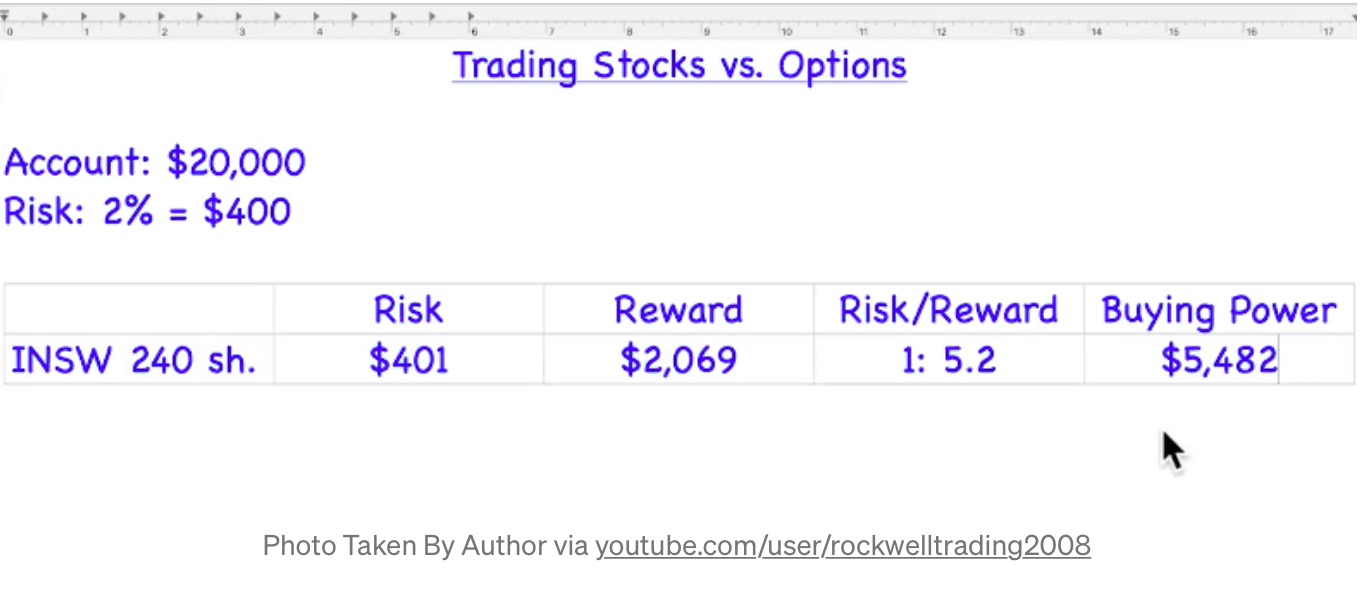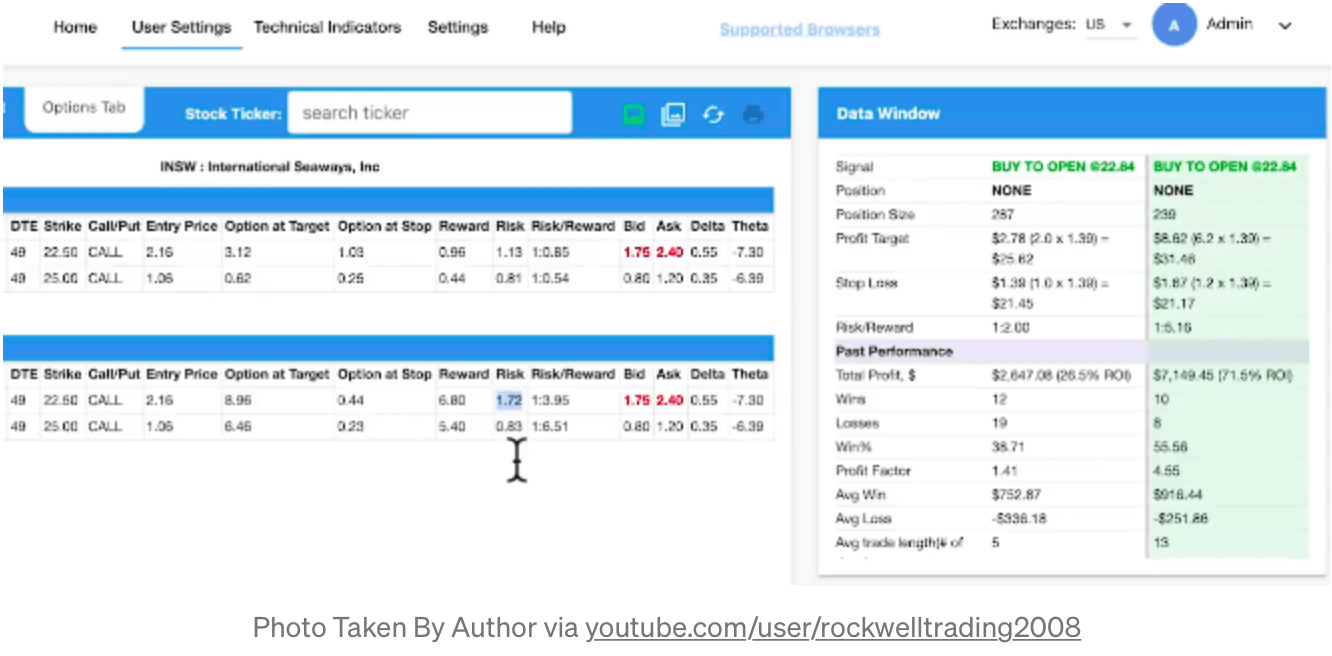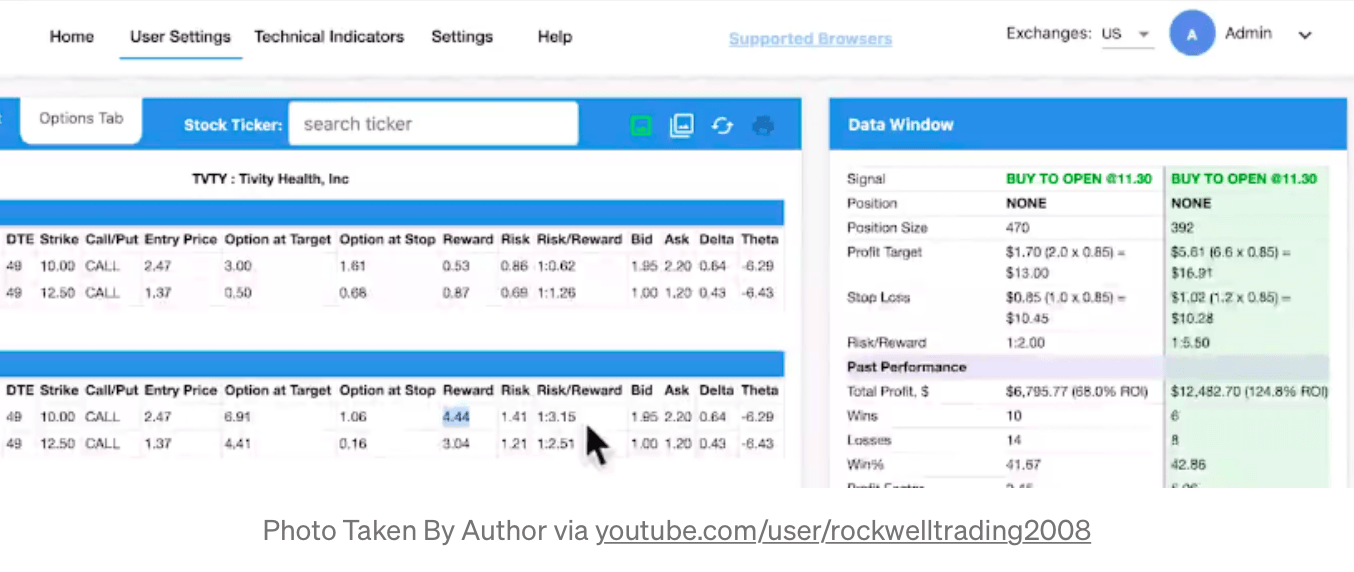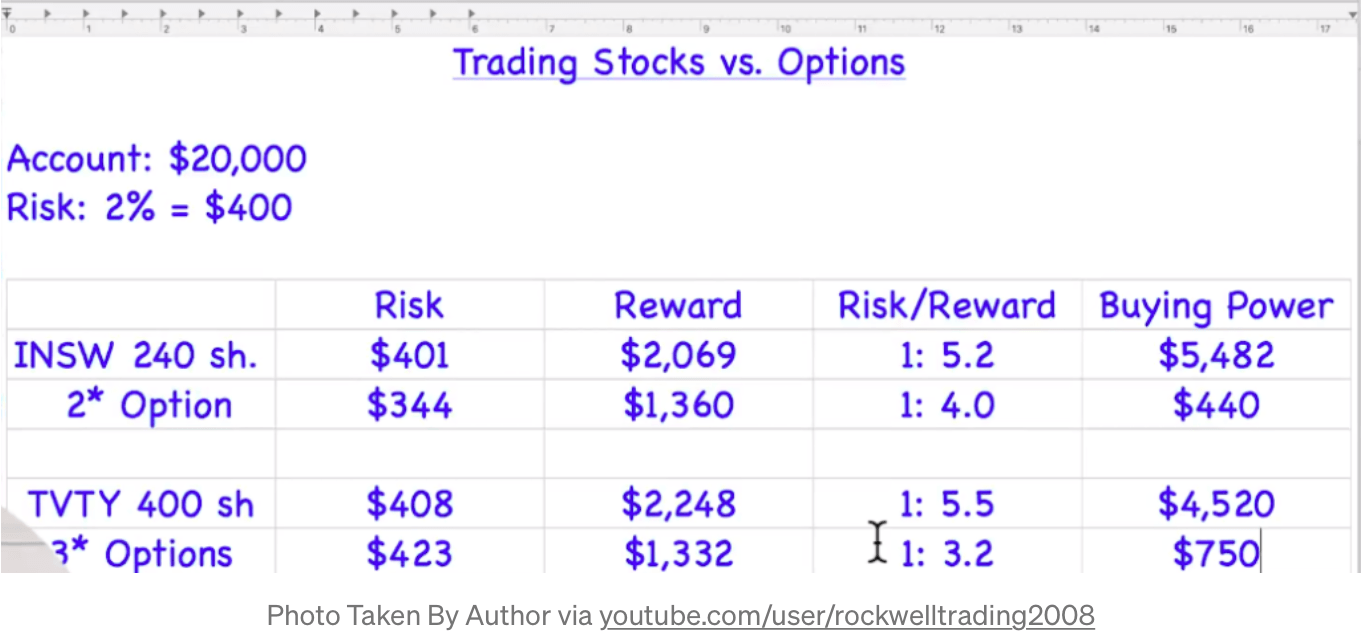I’m Markus Heitkoetter and I’ve been an active trader for over 20 years.
I often see people who start trading and expect their accounts to explode, based on promises and hype they see in ads and e-mails.
They start trading and realize it doesn’t work this way.
The purpose of these articles is to show you the trading strategies and tools that I personally use to trade my own account so that you can grow your own account systematically. Real money…real trades.
Stock Trading vs Options Trading
Stock trading vs options trading, what should you trade? What is better? Is it better to trade stocks or is it better to trade options? That’s what we’re going to talk about today.
I will also show you practical examples from trades that occurred today, so let me jump onto the desktop.
Now, I want to use an account size of $20,000 as an example here where I’m comparing whether it is better to trade stocks versus options.
Depending on your account size, just multiply the numbers that I’m showing you by whatever your account size is and you’ll get the idea.
So the idea is, on a $20,000 account, we want to risk 2% of the account. This would be $400, nothing more.
Comparing Stock Trading vs Option Trading
Now, as we are comparing stocks and options, here are the things that I want to compare.
First of all, I want to write down how much we are risking stock trading vs options trading. I also want to write down the reward, how much are we planning to make on the stock or the option.
Based on this, I want to write down the risk/reward ratio, and also very, very important, the buying power.
What is the buying power? The buying power is the amount of your account that you need to reserve for this trade. It is not the risk and you’ll see this in just a moment.
Let’s take a look at some very specific trades that happened this morning.
INSW Stock Trading vs Option Trading
The first trade that I want to discuss is INSW.
So this morning (at the time of this writing) on the PowerX Optimizer, INSW came up as a trade, as a buy to open. And the idea here is that we are buying 239 shares based on a $20,000 account at $22.84.
Our stop loss here is $1.67 and we are trading 239 shares. I want to keep it a little bit easier for all of us with the math so we’re trading 240 shares.
What is our risk? Per one share, we are risking $1.67 and we are trading 240 shares, meaning that our risk is exactly $400.80. So here let’s just round it to $401.
Now, what is the potential reward that we are looking for? Here we are looking for a reward of $8.62 per share. $8.62 times 240 shares, so we’re looking to make $2,069.
So we’re putting this into our table, $2,069. So the risk/reward ratio here, PowerX Optimizer is calculating it, it’s 1:5.16 so let’s just say 1:5.2.
Now for the buying power. Again, we are buying 240 shares, and the cost per one share is $22.84, so we need $5,482 in buying power. So this is how much our buying power will be reduced when we enter the trade.
Now, let me ask you, is this making sense thus far? Just so that you know what happens when you’re trading the stock?
And again, we are trying to risk around 2% of the account here, $401.
Now, let’s take a look at the option here.
So I prefer to trade the in the money, I’ll do another article on the difference between ITM and ATM.
Now, in order to make it all a bit easier to compare apples with apples here, I am actually saying that we would trade 3 options, and $141 is what we are risking per one option, so $141 times 3.
It’s a little bit more than our $400, but I think we are still OK here. So we would risk $423.
Now the potential reward per one option is $444. So this is where we take $444 times 3, and again, this is where we are looking at $1,333.
As you can see, the risk/reward ratio here is worse than if we would trade the stock. It is 1:3.15 so we are rounding it again to 1:3.2.
Again, it would be better to trade the stock, but you’re using quite a lot of your buying power. For the option, all you need, all that is reduced, is your entry price, and the entry price it’s $2.47. So let’s say $2.50 times 3 is $750.
As you can see you need less buying power, but you also have a smaller reward. But this is why I say usually on a smaller account, it makes sense to trade options instead of stocks.
Now the other important thing, especially when you trade a retirement account, is that you don’t get a margin account. This means that you cannot leverage the money that you have in the account and you cannot short stocks.
So in the US, in a retirement account, you cannot short stocks. However, what you can do in a retirement account is that you can trade put options, and with put options, you can bet on a falling market.
So this brings me back to the question…
What is better, stock trading vs options trading?
Well, this is why I wanted to show you a direct comparison using a real-life example. This way you see exactly when it is more advantageous to trade stocks, and when it is more advantageous to trade options.
Long story short, often for smaller accounts, since you use less buying power, it makes more sense to trade options.
And now you have a direct comparison between stock trading vs options trading that will hopefully help you decide what is best for you.
Trading Futures, options on futures and retail off-exchange foreign currency transactions involves substantial risk of loss and is not suitable for all investors. You should carefully consider whether trading is suitable for you in light of your circumstances, knowledge, and financial resources. You may lose all or more of your initial investment. The lower the day trade margin, the higher the leverage and riskier the trade. Leverage can work for you as well as against you; it magnifies gains as well as losses. Past performance is not necessarily indicative of future results.
Editors’ Picks
EUR/USD edges lower toward 1.0700 post-US PCE

EUR/USD stays under modest bearish pressure but manages to hold above 1.0700 in the American session on Friday. The US Dollar (USD) gathers strength against its rivals after the stronger-than-forecast PCE inflation data, not allowing the pair to gain traction.
GBP/USD retreats to 1.2500 on renewed USD strength

GBP/USD lost its traction and turned negative on the day near 1.2500. Following the stronger-than-expected PCE inflation readings from the US, the USD stays resilient and makes it difficult for the pair to gather recovery momentum.
Gold struggles to hold above $2,350 following US inflation

Gold turned south and declined toward $2,340, erasing a large portion of its daily gains, as the USD benefited from PCE inflation data. The benchmark 10-year US yield, however, stays in negative territory and helps XAU/USD limit its losses.
Bitcoin Weekly Forecast: BTC’s next breakout could propel it to $80,000 Premium

Bitcoin’s recent price consolidation could be nearing its end as technical indicators and on-chain metrics suggest a potential upward breakout. However, this move would not be straightforward and could punish impatient investors.
Week ahead – Hawkish risk as Fed and NFP on tap, Eurozone data eyed too

Fed meets on Wednesday as US inflation stays elevated. Will Friday’s jobs report bring relief or more angst for the markets? Eurozone flash GDP and CPI numbers in focus for the Euro.
RECOMMENDED LESSONS
Making money in forex is easy if you know how the bankers trade!
Discover how to make money in forex is easy if you know how the bankers trade!
5 Forex News Events You Need To Know
In the fast moving world of currency markets, it is extremely important for new traders to know the list of important forex news...
Top 10 Chart Patterns Every Trader Should Know
Chart patterns are one of the most effective trading tools for a trader. They are pure price-action, and form on the basis of underlying buying and...
7 Ways to Avoid Forex Scams
The forex industry is recently seeing more and more scams. Here are 7 ways to avoid losing your money in such scams: Forex scams are becoming frequent. Michael Greenberg reports on luxurious expenses, including a submarine bought from the money taken from forex traders. Here’s another report of a forex fraud. So, how can we avoid falling in such forex scams?
What Are the 10 Fatal Mistakes Traders Make
Trading is exciting. Trading is hard. Trading is extremely hard. Some say that it takes more than 10,000 hours to master. Others believe that trading is the way to quick riches. They might be both wrong. What is important to know that no matter how experienced you are, mistakes will be part of the trading process.






